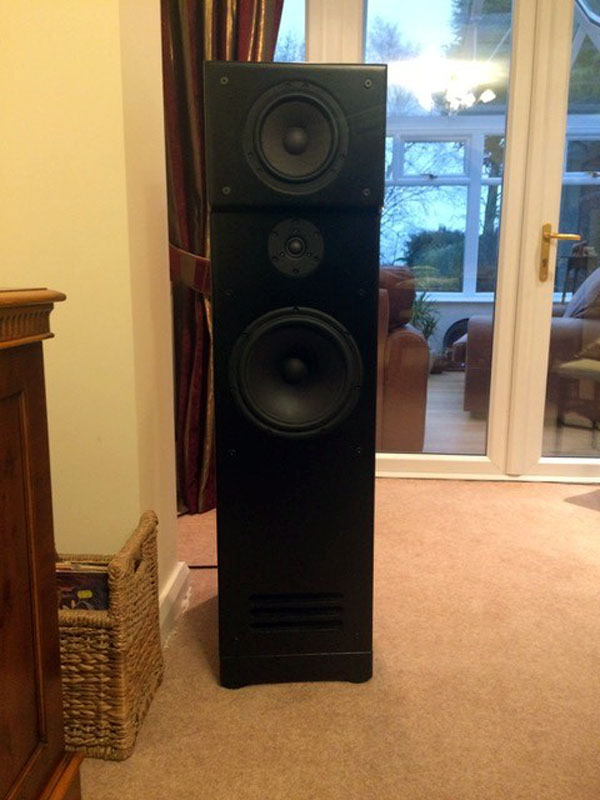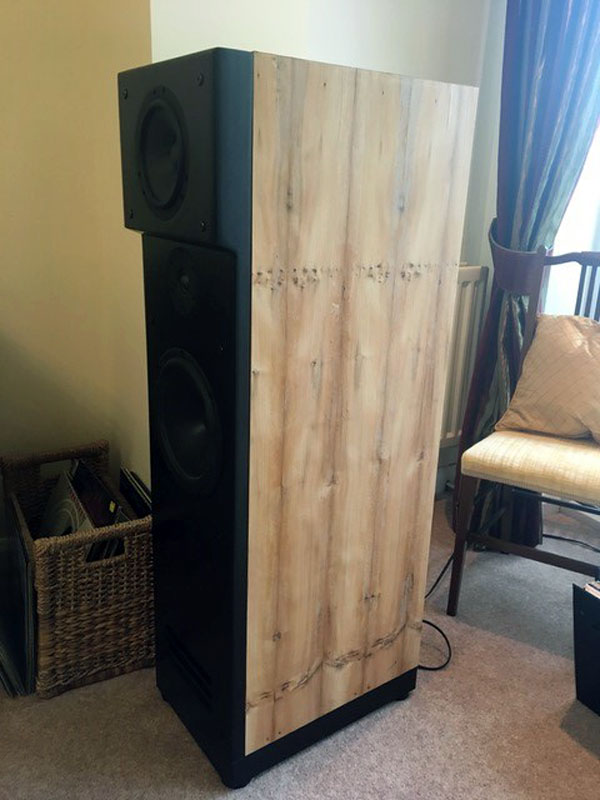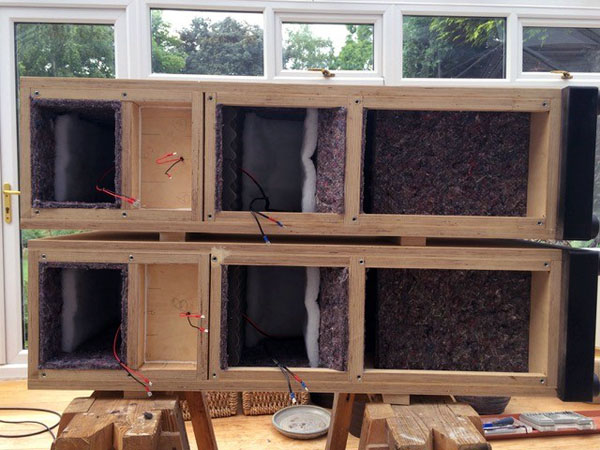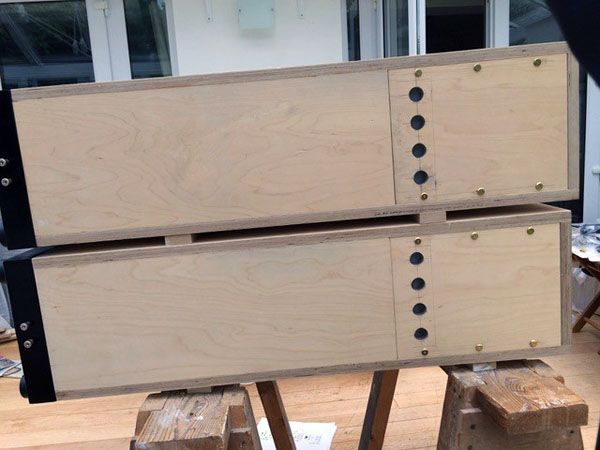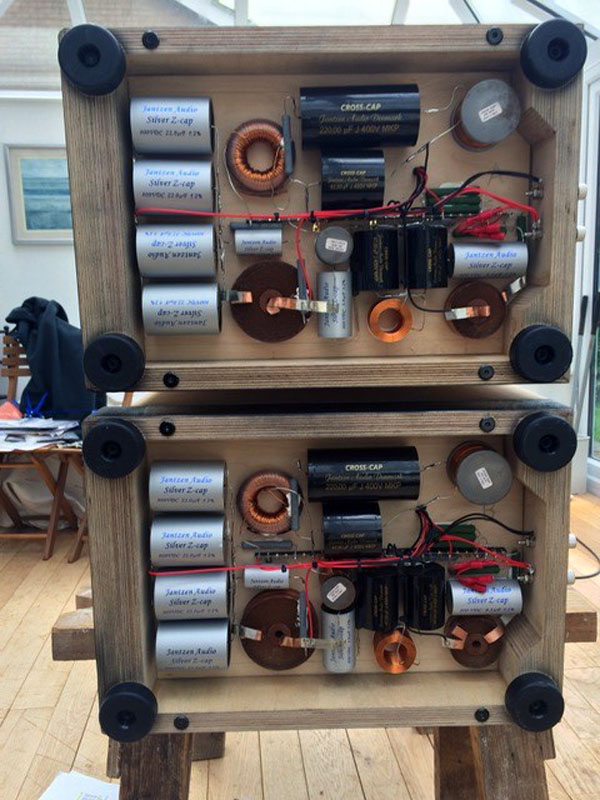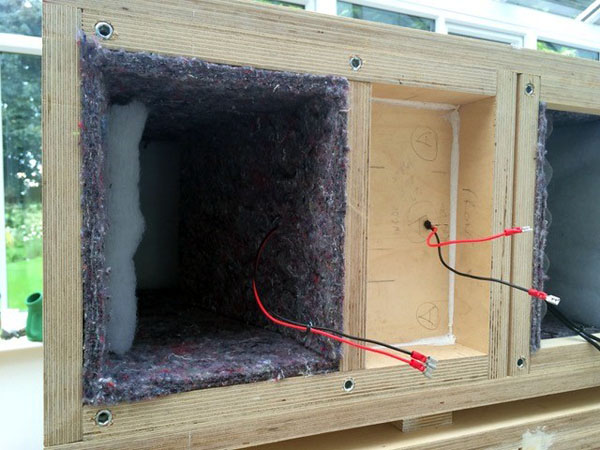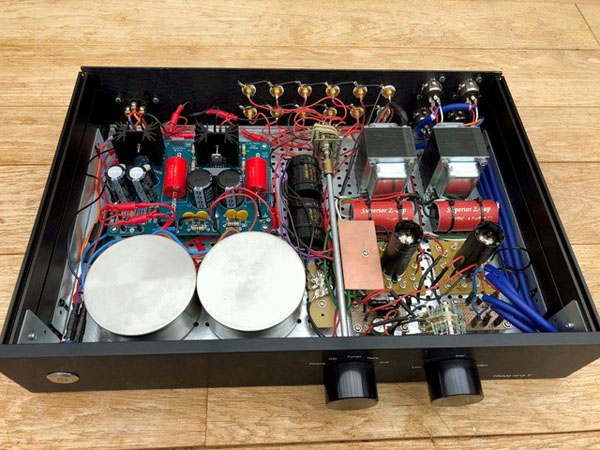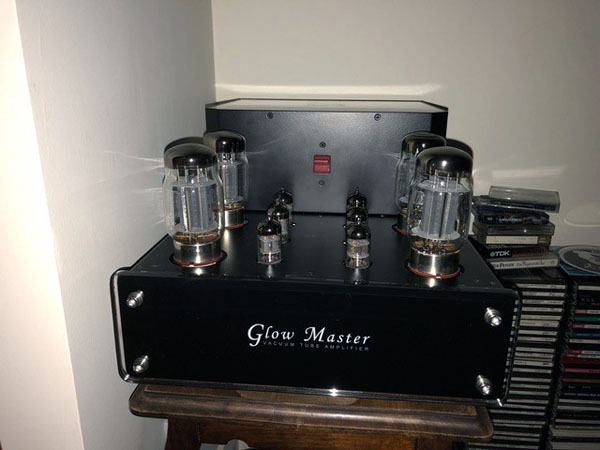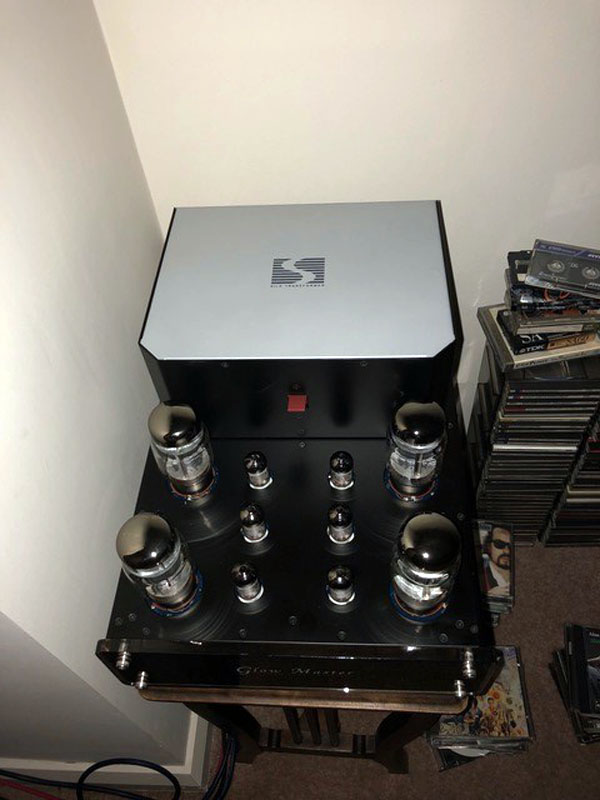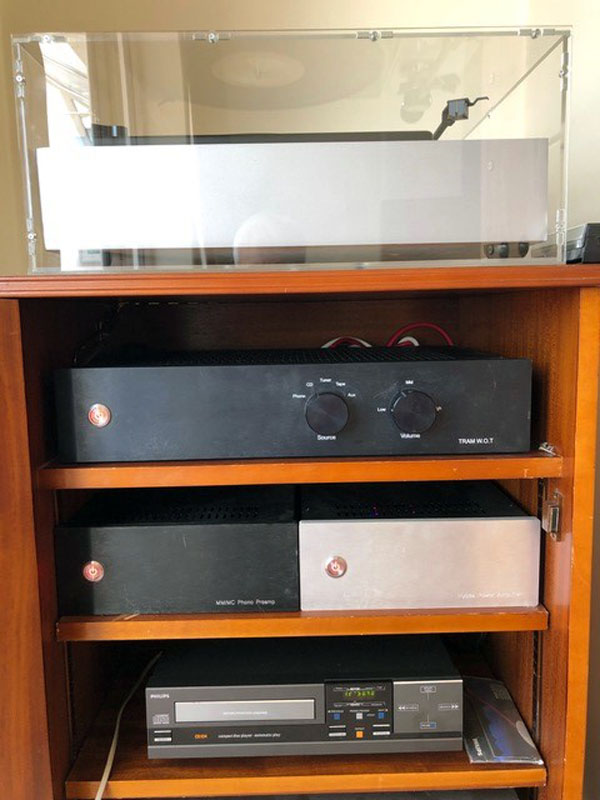Jenzen Illuminator, built by Steven
Copyright 2019 © Troels Gravesen
Hi Troels,
I have just set up the speakers for a test, all I can say is the the
sound is truly remarkable and i am stunned at their performance. I have
a whole new perspective on what recorded music can deliver! The test
extended well into the night and my wife was also completely taken by
what she could hear.
I still have to complete them as the cabinets have to be veneered to
match the existing furniture, as soon as I have done that I will send
some pictures across.
In the meantime I want to express my deep gratitude to you for making
your knowledge and designs freely available, without it I couldn’t have
got to the result I have.
Cheers and thanks again
Steven
Hello Troels,
Apologies for the delay in responding as I have been on a quest for
improved sound and have completely rebuilt my HiFi system, largely
inspired by yourself, so before I start, a very big thank you for all
you have shown on your website. I don’t know whether you want to use all
of this mail as it will be quite lengthy; it will cover many aspects of
my HiFi system and not just the speakers.
Speakers
The beginning was around 2 years ago after Christmas when I was sitting
down with my wife and we were discussing what to do and the question was
raised as to why we didn’t listen to more music, looking at the existing
system the answer appeared immediately, it was very old and was tiring
to listen to, the question was what to do about it? The internet is a
wonderful thing and very quickly speakers were seen as the first
improvement opportunity, as someone who likes making things DIY came up
and very quickly i had found your website. The first question was what
size and type of speaker to build? As you say size matters, equally
important is the WAF for final approval. I was looking for the best
possible sound with the ability to play at a relatively low level, hence
Transmission Line, the other factor was that I worked for Vestas at the
time, had been to Videbaek many times and was surprised that at the back
of the office there was the Scanspeak factory, consequently the decision
was the Jenzen Illuminator. For final WAF approval they had to match the
existing furniture, so were to be veneered in yew.
They were largely based on your design, except they were to be of a
single cabinet construction, modular, allowing access all the internals
when built. Following a quick exchange of emails with yourself there was
to be a 2mm gap between the top of the bass and the M/T cabinet. For
modularity the three major parts for each cabinet were to be the box,
the baffle including the drive units and the crossover board including
the base plinth. Pan headed screws were used to connect them together,
this also allows for easier movement as once the speakers are assembled
they would be too heavy to move by a single person. To maintain edge
stiffness in the base section, as the baffle was not to be glued in
place, additional pieces were added along the edge of the bass cabinet,
whether this has any measureable affect is open to question but was
easily done, the other thing noticed is that by making a single box the
top of the base section is stiffer. The baffle itself was made of
plywood, this is significantly stiffer than MDF, again whether this has
an effect I do not know, however, as you say on your website plywood
baffles are not so easy to work with, I ended up by using a round bevel
finish for all the sharp edges. I tried to paint them myself,
unsuccessfully, so I asked a local painter to cover them with a two pack
epoxy paint, the results exceeded my expectations and gave the baffles a
very professional finish,
Building was at the limits of the available space and tools, the
sections of plywood for the speakers were cut by the local wood supplier
on a professional table saw, in total this requires two sheets (2440 x
1220) of 24mm plywood for the cabinets and the two baffles come out of a
single sheet of 15mm plywood with extremely low levels of waste. The
only cutting I did was for the internal sections and the bases. The
cabinets were glued together using biscuits with butt joints, this
allowed good alignment to be made between the sections before gluing
commenced, once in the gluing phase alignment could not be easily
changed as the box assembly was both large and heavy requiring extensive
clamping. The mid and tweeter box was built first with the bass being
added as the second stage. A point to note is that you have to be
comfortable working to tolerances of better than 0.5mm to achieve a
rectangular box with good joints when using this approach, later
adjustments are not really possible. The baffle was made by gluing
together sheets of 15mm ply to get the 30 and 60mm thicknesses, the
first stage was to glue the two larger sections to get to 30mm then rout
the bass and treble driver holes then glue the smaller sections on to
rout out the mid driver hole. The 29mm between the mid and tweeter was
achieved by routing out the mid to a 1mm greater depth.
The components arrived from Jantzen audio, an excellent service, with
final build and assembly then taking place. As you can access all the
compartments it was relatively easy to fit all the internal damping
after the main cabinets had been built. The modules are held together by
hex drive flathead screws with countersunk hex screws used for the drive
units, these are both screwed into inserts permanently fixed in the
cabinet. Crimp connections are used fo connect the drive units to the
wires and to allow the crossover board to be removed. Whether this
affects the sound is a question that will be asked, my view is that
there are bigger things to worry about. This modularity was tested later
when the bases were removed to convert the speakers to Bi-Amping and
later complete disassembly took place to add the veneer, in both
instances this was straightforward.
Now we come to the testing, I set up the new speakers next to the old
ones with the idea to compare, suffice it to say there was no comparison
and the old ones went straight to the loft. The range, transparency and
detail was stunningly different with whole new levels of sound appearing
even when played through the old system. The other outcome was that the
speakers very quickly highlighted the deficiencies in the rest of the
equipment.
The total build cost was around £4000/€5000, the question is what would
they cost commercially? I happened to come across the Vapor Audio site,
if you look at the Joule Black or White you will see largely the same
set up and drive units, admittedly on a very well finished cabinet, but
I suspect with a very similar sound capability. The price on the website
shows what the commercial value of the Jenzen speakers probably are as
you will also have to include shipping, duties and local sales tax to
the price.
Turntable
As I was building the speakers I was very impressed by your modification
of the Lenco 75 with a new plinth; based on that I set about obtaining
an old unit, this was probably the most difficult part as they are
increasingly rare. An old Dynatron music centre was the donor, creating
the plinth itself was reasonably straightforward after experience gained
by building the speakers. The painting was done by the same painter who
did the baffles, again a stunning outcome. The arm used was off the
original deck I had, a Mission 774LC - a rebadged Jelco. With the
original MM cartridge the performance was stunningly better, both the
top end and bottom appeared as if by magic. A Denon MC cartridge was
then used which took it a step further, once I had built a suitable
phono amplifier, yet another story.
PreAmp
I was impressed by your TRAM with output transformers, I had already
identified that I was looking to BiAmp the speakers so I looked into how
to make it. The final outcome was to put it in a professionally made box
(Modushop by Hi-Fi 2000), the power supply was to be the PS1 from the
TubeCAD website with the output transformers from Sowter. The remaining
components came from HiFi Collective. I roughed out the layout to ensure
that everything would fit, it was going to be tight, using 6N6P valves
using a 2U height box meant that there would be only 1-2mm clearance
both top and bottom. The only real change I made to your design, apart
from the solid state power supply, was to use a 3.3k resistor rather
than a 100 ohm one, the reason behind this was to pull the operating
point of the triode down to a lower quiescent current. When measured the
supply from the PS1 is 160V and the voltage at the anode is 140V. After
prolonged operation the case is only warm to the touch.
Once in receipt of all the components assembly commenced, this was
largely uneventful and when I plugged it in, it worked well, except for
the hum……to cut a long story short I purchased some MuCans, they are not
cheap but the results are excellent; the transformers were now shielded
and the problem was solved. If you put your ear right in the cone of the
speaker you can just about hear it, at 1 metre, nothing. Once the hum
was removed I could then really appreciate the abilities of the PreAmp
to connect the source to the amplifier without adding or just as
importantly losing anything. Looking at the Van der Veen website there
are some interesting articles that show why this might be the case.
Amplifiers
As was indicated earlier I was seeking to Bi-Amp the speakers, the final
outcome was that I built a Hypex unit for the bass and bought a
Glowmaster Amplifier, it really does stand out as excellent value and I
was not disappointed. The main difference to your Glowmaster is the
layout and the addition of automatic bias. After searching around the
best information on auto bias was again on the Van der Veen website
which indicates that for toroidal transformers it is a great benefit.
For air gapped, which are less sensitive to DC voltage, there is very
little information. What is clearly a benefit is that you just switch
on, wait a while and then listen without having to set or worry about
the bias. The other upside is that it gives the valves a consistently
smooth ride.
The difference between using a single amp and Bi-Amping is not as large
as others but still very noticeable, bass is well controlled with
improved mid and top end clarity. I was also very aware of the
difference between voltage control and current control of the speakers
by each amplifier. After thinking about it I believe that the impedance
of each section of the speakers when Bi-Amped would be nearer 8 Ohms as
the connection between the base and mid/top is now broken, this was the
setting used on the Glowmaste. It sounded better, however, without the
means to measure this it is an estimate based on your original
measurements.
Other activities
Alongside the above I also built a phono PreAmp using the circuit boards
from Elliott Sound Products together with Sowter transformers for
connecting it to an MC cartridge. The other activity was to rebuild my
very first CD player, a broken Philips CD-104 I had in the loft, where
after the griplets were fixed an upgraded power supply, OsCons and NOS
(No Over Sampling) were installed. For both of these builds I was
extremely pleased with the outcomes, more detail, transparency and
dynamics were heard. There are many websites detailing the changes that
can be made to a CD-104 so I will not say any more here.
Observations
What I very quickly discovered on the internet were the many, often
contradictory opinions held. On careful reading and thought it was
noticed that many have some truth within them. What guided me on my
journey was the following:
For the individual system components (Sources, amplification, speakers)
a very careful assessment of their individual performance capabilities
versus my overall requirements were made before build/purchase
The interfaces between the components selected were crucial, careful
matching is necessary here to maximise performance of the next stage(s)
I took a holistic view of the entire system, the sum is what I actually
hear, the completed system was a conscious plan that started with the
speakers
Final thoughts
I have a music system with which I am extremely satisfied, the challenge
now, for both myself and my wife is to increase our musical experiences
with new material.
Finally thank you again for your inspiration, information and passion
for improvements.
Steven
